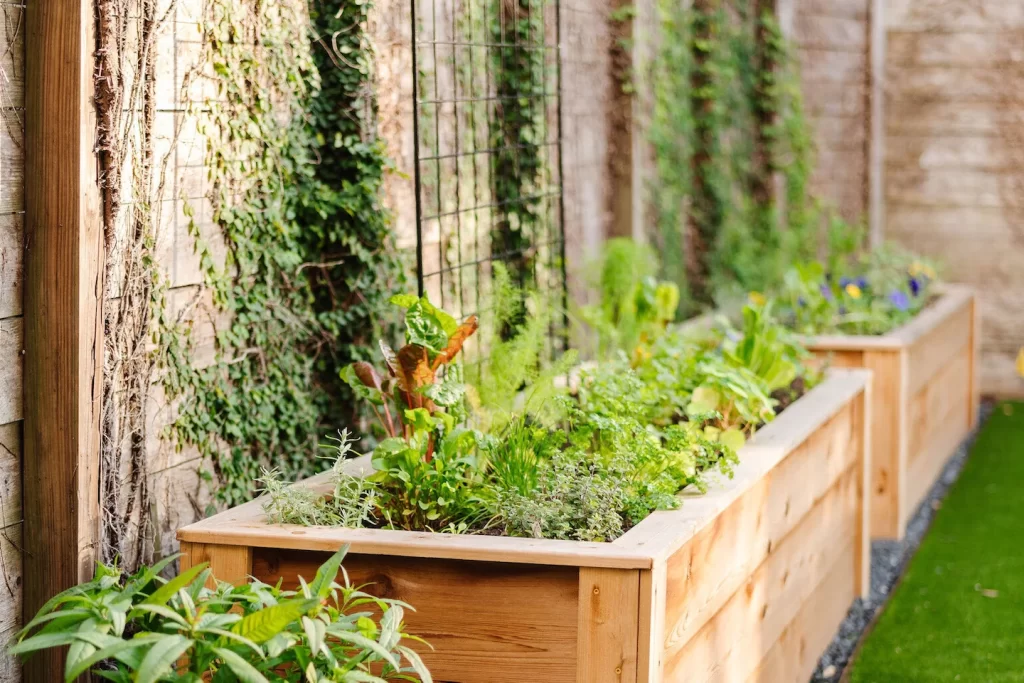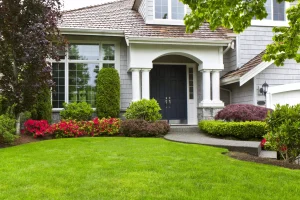Selecting appropriate plants for vertical garden structures is crucial. Complementary planting helps prevent aggressive growers from overshadowing more sedate ones by taking away water, sunlight and nutrients that were originally meant for slower-growing ones.
Search for vegetables and herbs that naturally twine or climb, such as pole beans, peas, indeterminate tomatoes, cucumbers, squash and melons.
1. Use a trellis
Trellising can help many vining vegetables and fruits thrive, including cucumbers, peas, beans, and vine-type tomatoes. By elevating these plants from the ground they become easier to harvest while less likely to rot or attract pests.
Trellises add structure and beauty to your garden. If you want to use one for vegetable gardening, be sure to place them in groups so as to not shade one another; others could benefit from receiving sunlight that would otherwise go to others. Plus, since they’re exposed more directly to elements they may require additional watering.
2. Use a pergola
Utilizing a pergola to vertically grow plants is an ideal way to create beautiful yet practical garden spaces. A pergola’s sturdy frame provides vines a secure place to climb while providing shaded seating space for you to appreciate your handiwork.
When adding a pergola to your vertical garden, make sure that you consider its weight bearing capacity and how this may influence plant placement. Plants without soil to draw moisture from will need watering more frequently so consider investing in a drip irrigation system as part of this vertical garden feature.
Tepees provide a straightforward yet effective means of growing vines and flowers to add some visual texture and attract pollinators to your pergola, while vertical plant walls offer more sophisticated growing systems with soilless potting mixes and integrated irrigation.
3. Use a plant wall
Plant walls are an effective way to add color and depth to your home or garden, by mixing different sized and shaped pots into an eye-catching arrangement. Or create an open vertical garden using hex wire netting trellises; alternatively you could frame your entranceway with unique structures like this gate or arbor for even greater impact and wow factor.
When planting a green wall, it is important to select plants that will thrive together. Ferns, Tillandsias & orchids thrive in this type of environment as do mosses, succulents & grasses; herbs, vegetables & strawberries may also be grown successfully in such walls if pathways are created for water flow along the planters.
4. Use a potting bench
A potting bench allows you to work comfortably and reduce backache caused by hunching over containers, as well as make tending plants that need more soil depth simpler.
Consider using trellises for climbing vegetables such as garden peas and squash, as well as flowers such as berries. Trellis supports can also provide support to tomato plants growing vertically with enough help from you in their climb.
For an eye-catching display, creeping vines such as phlox and morning glories provide wall planters with colorful displays of blooms while edible varieties of nasturtiums add beauty while simultaneously being tasty! Other decorative vertical gardening options include tepees and arbors which divide long garden spaces while adding visual interest.
5. Use a storage unit
Have you seen lush planted walls in hotel lobbies and shopping malls? Create that same look at home by using wall-mounted planters or trellis systems to replicate this look.
Consider plants with natural vineing tendencies like cucumbers, tomatoes and squash; as well as trellised herbs, edible flowers or wheatgrass for juicing purposes.
When planning your vertical garden, take care to arrange all plants together in an organized fashion so they do not compete for sun, space and hydration. This will prevent plants from overtaking one another for resources like sun exposure or soil moisture levels.
Planting vertically can help lower temperatures in an area by decreasing soil evaporation, saving on energy costs in summer while producing fresher and flavorful produce for local consumption. Furthermore, planting near home can decrease air conditioning needs.




